




Tufts University is a distinguished private research institution situated in the greater Boston, Massachusetts area. Recognized globally for its leadership in higher education, research, and innovation, the university draws students from around the globe to participate in—and contribute to—its world-class programs. Tufts fosters an environment that encourages faculty and students to conduct groundbreaking research and collaborate with peers across an array of disciplines. With a stellar reputation and exceptional educational and research opportunities, Tufts leaves a lasting impact at the local, regional, and national levels.
Students, faculty, and sta from across the health sciences provide free and low cost medical care, health education, nutrition programming, and veterinary care for our neighbors.
Students, faculty and staff from across the health sciences provide free and low-cost medical and dental care, health education, nutrition programming, and veterinary care for our neighbors
Students, faculty, and sta from across the health sciences provide free and low cost medical care, health education, nutrition programming, and veterinary care for our neighbors.
Students, faculty, and sta from across the health sciences provide free and low cost medical care, health education, nutrition programming, and veterinary care for our neighbors.
All medical students complete at least 50 hours of community service learning, spending more +1600 hours annually in Tufts’ host communities.
COMMUNITY MEDICINE
COMMUNITY MEDICINE
All medical students complete at least 50 hours of community service learning, spending more +1600 hours annually in Tufts’ host communities.
All medical students complete at least 50 hours of community service learning, spending more +1600 hours annually in Tufts’ host communities.
COMMUNITY DENTISTRY
All medical students complete at least 50 hours of community service learning, spending more +1600 hours annually in Tufts’ host communities.
COMMUNITY DENTISTRY
Tufts Dental Facilities (TDF) provides comprehensive dental care for adults and children with developmental disabilities living in Massachusetts. TDF has more than 6,500 patients who are receiving care from oral health providers at seven di erent clinics across the
COMMUNITY DENTISTRY
Tufts Dental Facilities (TDF) provides comprehensive dental care for adults and children with developmental disabilities living in Massachusetts. TDF has more than 6,500 patients who are receiving care from oral health providers at seven different clinics across the state.
Tufts Dental Facilities (TDF) provides comprehensive dental care for adults and children with developmental disabilities living in Massachusetts. TDF has more than 6,500 patients who are receiving care from oral health providers at seven di erent clinics across the state.
Tufts Dental Facilities (TDF) provides comprehensive dental care for adults and children with developmental disabilities living in Massachusetts. TDF has more than 6,500 patients who are receiving care from oral health providers at seven di erent clinics across the state.




$28M
$28M
$28M
$28M
190
400+
400+
Amount saved annually by community members through discounted services at the Tufts Dental Clinic
Amount saved annually by community members through discounted services at the Tufts Dental Clinic
Amount saved annually by community members through discounted services at the Tufts Dental Clinic
Amount saved annually by community members through discounted services at the Tufts Dental Clinic
400+
Number of children receiving Tufts dental care at their schools each year through the Boston Public Schools Dental Program
Number of children receiving Tufts dental care at their schools each year through the Boston Public Schools Dental Program
Number of children receiving Tufts dental care at their each year through the Boston Public Schools Dental Program
Number of children receiving Tufts dental care at their schools each year through the Boston Public Schools Dental Program
3,500 ONLY VETERINARY SCHOOL IN NEW ENGLAND,
100,000
100,000
100,000
Number of animals cared for each year at the seven academic hospitals, clinics, and diagnostic laboratories of Cummings School of Veterinary Medicine
2,750
2,750
2,750
Number of animals cared for each year at the seven academic hospitals, clinics, and diagnostic laboratories of Cummings School of Veterinary Medicine
Number of animals cared for each year at the seven academic hospitals, clinics, and diagnostic laboratories of Cummings School of Veterinary Medicine
Number of animals cared for each year at the seven academic hospitals, clinics, and diagnostic laboratories of Cummings School of Veterinary Medicine
2,750
Patients per year at the Luke and Lily Lerner Spay/Neuter Clinics
Patients per year at the Luke and Lily Lerner Spay/ Neuter Clinics
Patients per year at the Luke and Lily Lerner Spay/Neuter Clinics
Patients per year at the Luke and Lily Lerner Spay/Neuter Clinics
3,500
3,500
Patients per year at Tufts Wildlife Clinic
3,500
Patients per year at Tufts Wildlife Clinic
Patients cared for each year at Tufts Wildlife Clinic
Patients per year at Tufts Wildlife Clinic
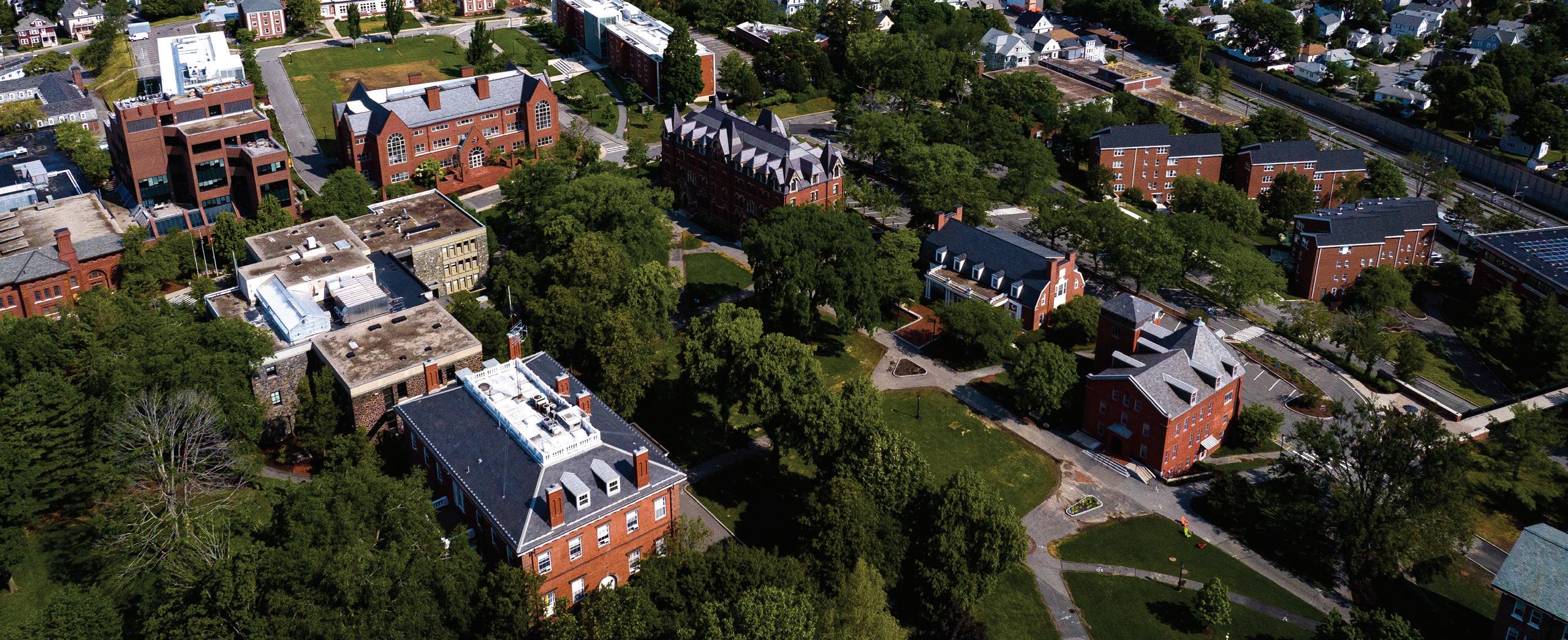
Tufts University, a private institution founded in 1852, is a student-centered research university dedicated to the creation and application of knowledge and committed to providing transformational experiences for students and faculty in an inclusive and collaborative environment. In fall 2023, Tufts had a total undergraduate enrollment of 6,662, a total graduate enrollment of 3,148, and a total professional enrollment of 2,105.
Tufts is a member of the Association of American Universities (AAU), a consortium of America’s leading research universities noted for their accomplishments in education, research, and innovation. Tufts also ranked 40th of 1,500 universities in the 2023–24 edition of the U.S. News & World Report—Best National University Rankings.
Operating across four campuses in the greater Boston area, Tufts combines exceptional teaching and research environments with the collaborations it has with other leading research institutions locally, regionally, and globally. The science, technology, engineering, and math (STEM) environment at Tufts fosters synergy and transdisciplinary teams among investigators, students, and faculty. State-of-the-art laboratories and equipment are maintained for individual faculty programs, and additional facilities are shared within departments and across schools. Some of these facilities also provide services to partner institutions across the region.
Home to 10 schools and two colleges, Tufts offers a distinctively fertile intellectual environment for collaboration among researchers and clinicians from a broad range of fields.
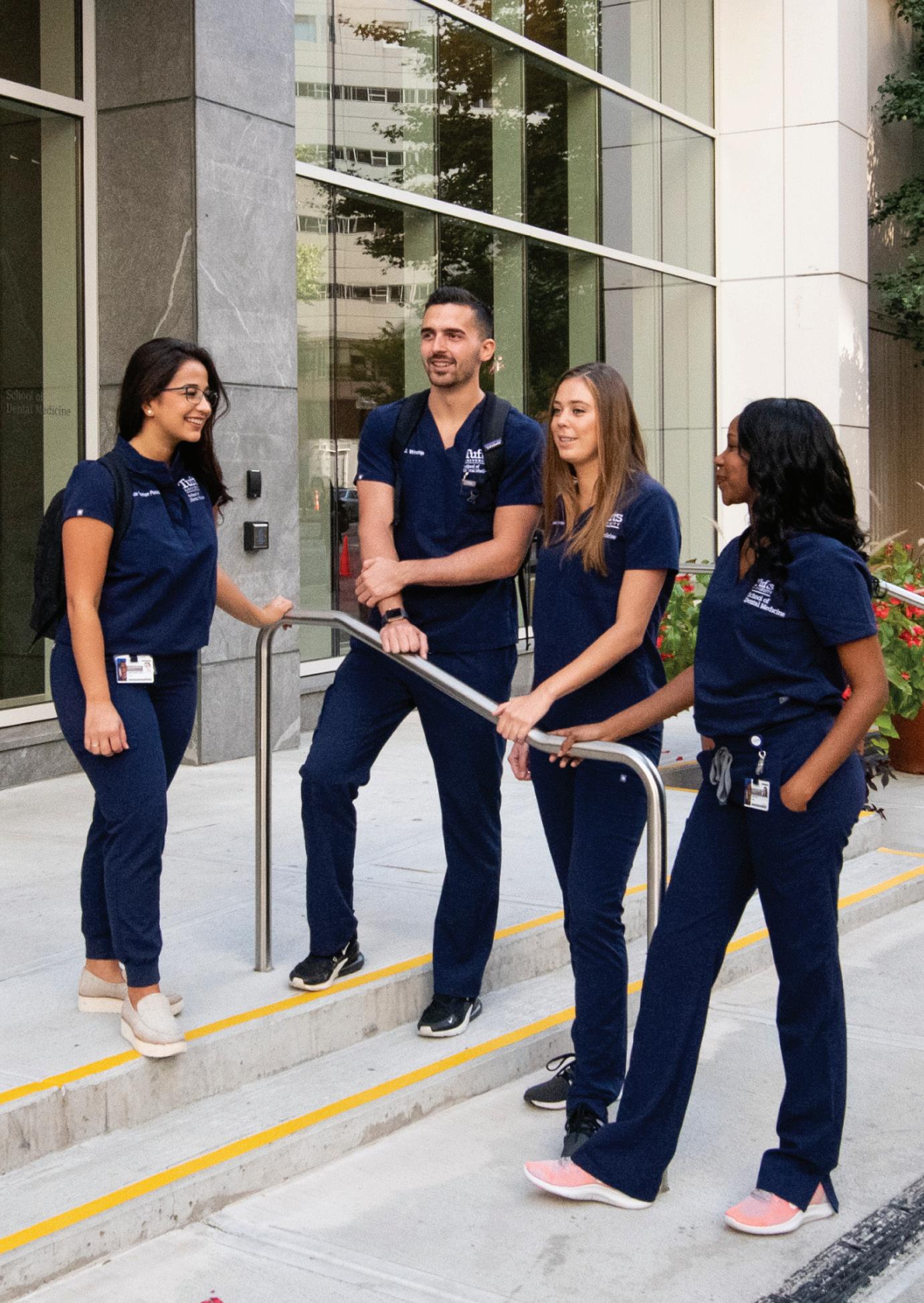
Tufts University’s graduate programs include (across all schools) more than 100 master’s degrees, 56 doctoral programs, and 42 certificate programs. Doctoral degrees in STEM fields are offered through 50 programs across the following seven schools: Graduate School of Arts and Sciences; School of Engineering; Graduate School of Biomedical Sciences; School of Medicine; School of Dental Medicine; Cummings School of Veterinary Medicine; and Friedman School of Nutrition Science and Policy. Combined, these schools awarded 788 doctoral degrees during fiscal year 2023.
Tufts University’s diverse collection of schools is vital to its commitment to the liberal arts, the research enterprise, and a collaborative, interdisciplinary culture. Tufts stands out in the United States as one of just a handful of institutions that offer doctoral programs in medicine, dental medicine, and veterinary medicine. Tufts is also home to the only veterinary school in New England.
For more than 90 years, The Fletcher School has been world-renowned for innovating the study and practice of international affairs and leading at the intersections of the most complex global challenges, in the context of an ever-evolving world. Among the school’s offerings are joint master’s degrees in cybersecurity and public policy with the School of Engineering, a master’s degree in humanitarian assistance with the Friedman School, and a doctoral degree in economics and public policy with the Graduate School of Arts and Sciences.
The School of the Museum of Fine Arts (SMFA) at Tufts offers undergraduate, graduate, and non-degree programs in areas of study including painting, sculpture, performance, and virtual reality, among others. Students work with faculty across two campuses that together encompass almost 450,000 square feet of classroom, library, and studio space. The SMFA is closely connected with the Museum of Fine Arts, Boston, and is part of Tufts University’s School of Arts and Sciences.
The Jonathan M. Tisch College of Civic Life is a national leader in civic education and engagement that sets the standard for higher education’s role in advancing the greater good. Tisch College combines education, research, and practice to serve as a hub for students, faculty, and community members who are committed to civic engagement and to its ability to change the world for the better.
Tufts has four campuses, allowing students to find an ideal environment in which to pursue their education. The campuses are close enough to one another to facilitate regular interaction and interdisciplinary collaboration. The campuses outside Boston are near enough for students to pursue the city’s many professional, intellectual, and recreational opportunities.
From a picturesque hilltop overlooking Boston, students, faculty, and staff on the Medford/Somerville campus enjoy a classic New England college environment with access to an abundance of resources to make their experience memorable.
• School of Arts and Sciences
• Graduate School of Arts and Sciences
• School of Engineering
• The Fletcher School
• Jonathan M. Tisch College of Civic Life
• University College
Located steps from Boston’s celebrated art museums in the Fenway neighborhood, the School of the Museum of Fine Arts at Tufts features plentiful studio and classroom space, as well as housing and dining options for students.
Tufts’ Boston health sciences campus enables students and faculty to collaborate closely and train at world-class medical facilities.
• Graduate School of Biomedical Sciences
• School of Dental Medicine
• Gerald J. and Dorothy R. Friedman School of Nutrition Science and Policy
• School of Medicine
• Jean Mayer USDA Human Nutrition Research Center on Aging
Further expanding its health science and biomedical footprint, Tufts introduced a doctor of physical therapy program at the Phoenix Bioscience Core (established in 2021) and in Seattle (established in 2023).
Home to Cummings School of Veterinary Medicine and spanning nearly 600 bucolic acres of crop fields, pastures, and woods, the Grafton campus offers the ideal setting for a veterinary school and is within driving distance of the cities of Boston and Worcester.
In fall 2023, Tufts sought to measure the economic value generated by university operations and expenditures throughout New England, in Massachusetts, and in the university’s host communities of Boston, Grafton, Medford, and Somerville. The university partnered with Tripp Umbach, a recognized expert in measuring economic impact, to conduct this analysis. This report measures the direct and indirect economic impact of Tufts’ operations for fiscal year 2023. The study also includes breakout analyses of the economic impacts of Tufts’ education and scholarship, research, athletics, and its alumni.
These impacts fall within the following categories:
• Business volume impacts (capital expenditures, operational expenditures, and payroll)
• Direct, indirect, and induced employment impacts
• State and local tax impacts
• Construction impacts attributable to Tufts
• Impact of employee and student spending on goods and services (retail/merchandise, hospitality, etc.)
• Impact of alumni on the economy (including wage premiums and job creation)
• Impact of visitor spending on the economy (including wage premiums and job creation)
• The impact that employees and students have on the community through donations and volunteer work
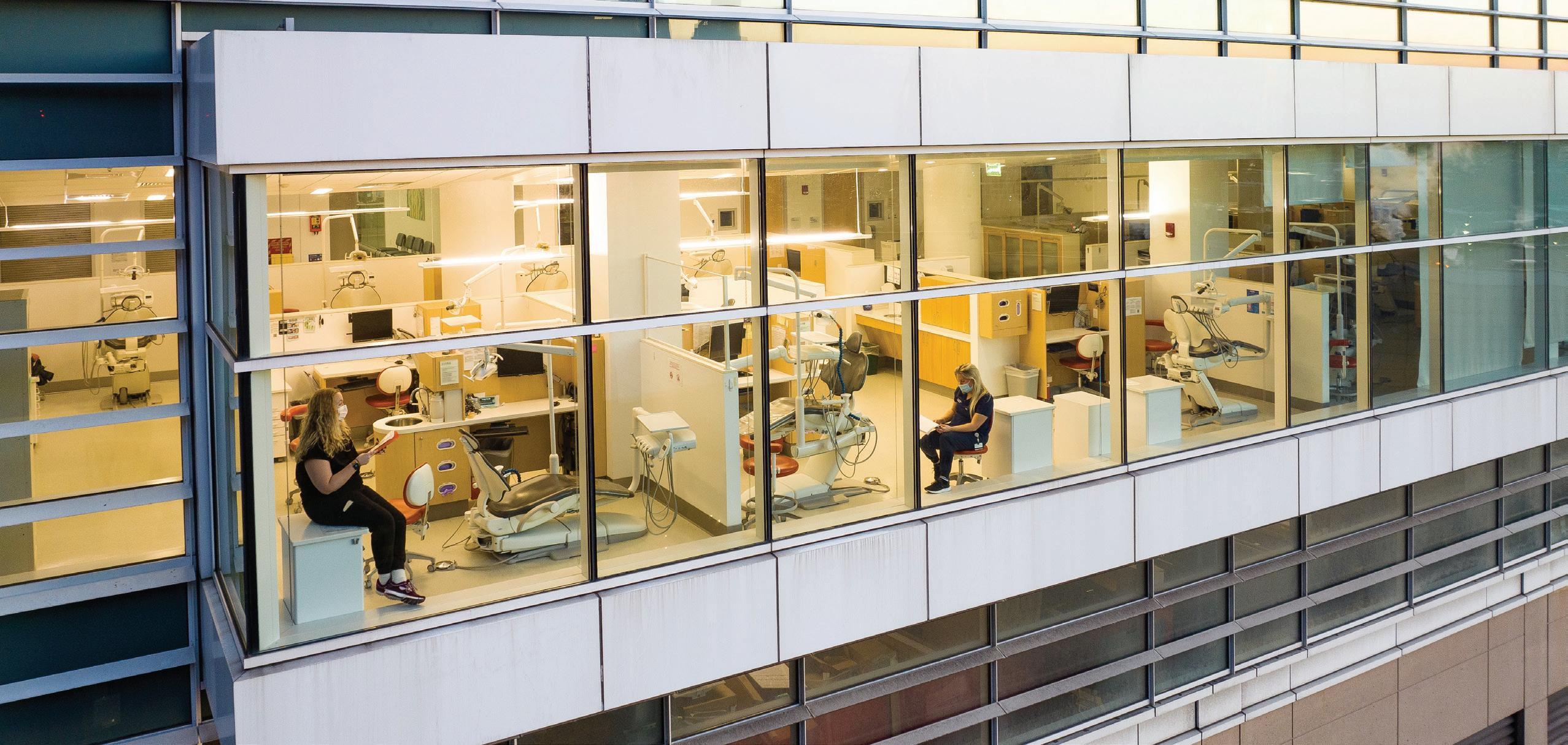
The impact analysis for Tufts was conducted to measure the economic, employment, and tax impacts of Tufts within the following geographies:
The methodology employed in the calculation of these impacts is IMPLAN.1 Primary data utilized to conduct the analysis was collected directly from Tufts. Data included capital expenditures (five-year average), operational expenditures, employment headcounts, payroll and benefits, taxes, visitation numbers for events on campus and number of students and proportions of students who live on and off campus to accurately measure their spending in the local area, and event information for FY23.2
Tripp Umbach used both secondary data and the firm’s benchmarking databases (developed over 30 years from experience with hundreds of similar studies) to estimate: spending by visitors to the university, conferences and meetings; the commercialization value of research; and the value of donations and volunteerism by students, faculty, and staff.
The economic impact values presented in this report are generated by: direct, indirect, and induced operational spending; capital spending; payroll; visitor spending; and student spending throughout each geography. The multipliers used in this study were derived from the IMPLAN software. Tripp Umbach’s approach to economic impact analysis is conservative insofar as it utilizes the industry-standard software, IMPLAN, to conduct the impact analysis and as it uses conservative assumptions for individual spending patterns. Tripp Umbach bases assumptions of spending on federal per diem rates.
Total economic impact measures the dollars that Tufts’ presence generates within the geographies listed above. This includes: spending on goods and services with vendors; its faculty, staff, students, and visitors; and the business volume generated by businesses within the regions and the state that benefit from Tufts’ spending.
It is important to remember that not all dollars a university spends remain in its neighborhood, state, or multi-state region. Dollars that go out of the defined geographies to out-of-state vendors are not included in the university’s economic impact on the given geography.
1 Minnesota IMPLAN Group Inc. (MIG) is the corporation responsible for producing IMPLAN (IMpact analysis for PLANning) data and software. IMPLAN is a micro-computer-based, input-output modeling system. With IMPLAN, one can estimate input-output models of up to 528 sectors for any region consisting of one or more counties. IMPLAN includes procedures for generating multipliers and estimating impacts by applying final demand changes to the model.
2 FY23 represents the period from July 1, 2022 to July 30, 2023.
Tufts faculty, staff, and students engage with the community on their own time and in their own ways throughout each year. These efforts come in the form of volunteer hours, financial donations, and other community engagements. Community benefits provided in this report outline two forms of impact: monetary donations made by employees and students to local non-profits and volunteer hours, which have been assigned a monetary value.3
Tufts’ overall impact on Massachusetts goes beyond the economic outcomes analysis that is this report’s primary focus. The broader impact is acknowledged but not comprehensively documented in this report.
For further information on impact terms and frequently asked questions related to economic impact analyses, please see Appendices A and C.
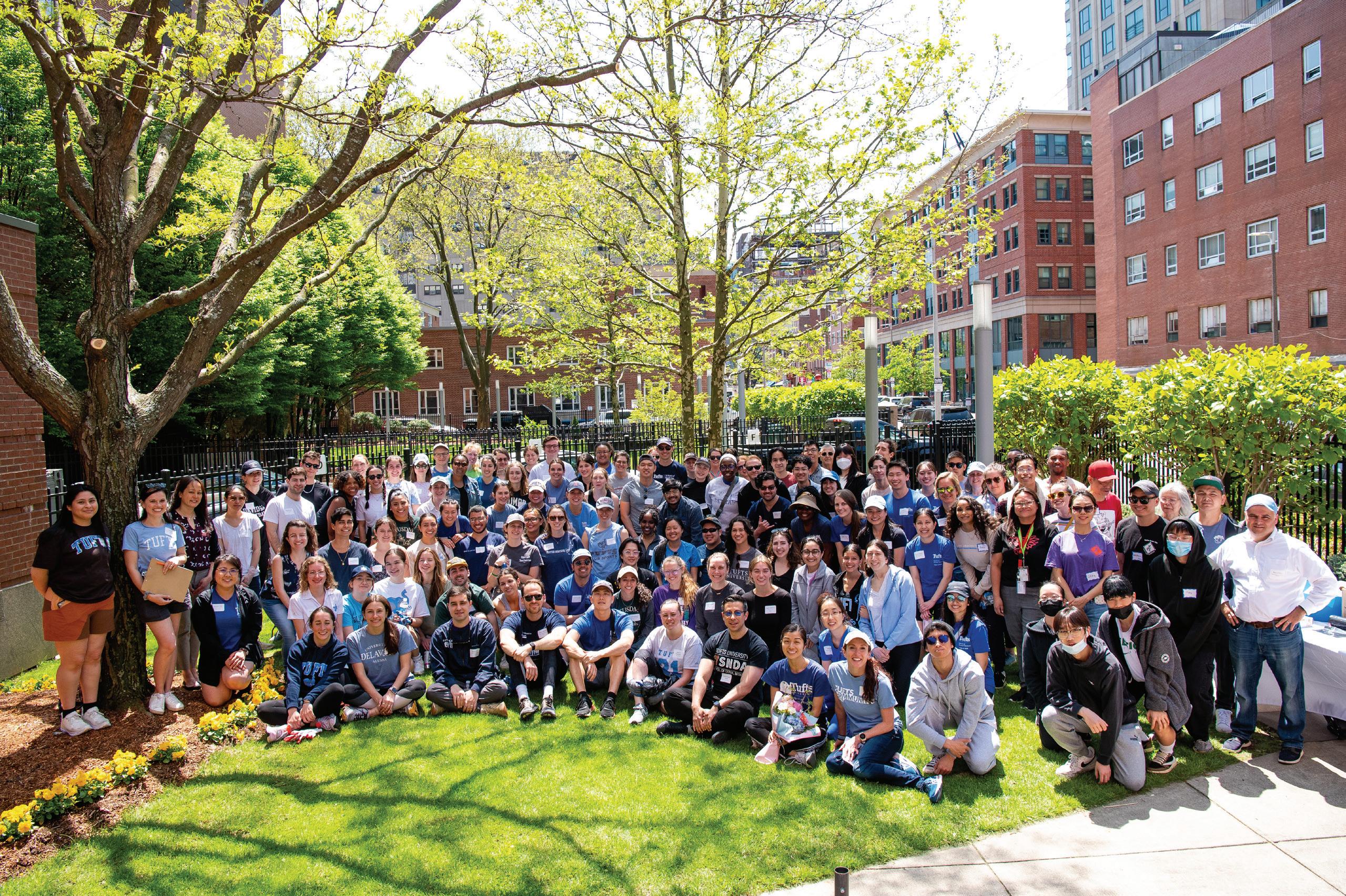
3 Tripp Umbach has conducted survey research to estimate the amount of monetary donations students, staff, and faculty will spend in a year. This amount differs per individual but ranges from $200 to $700. Tripp Umbach also understands that not all individuals donate; therefore, this is adjusted as well. The value of a volunteer hour has been quantified by Independent Sector to be approximately $31.80 per hour. Tripp Umbach utilized this value with the understanding (also from survey research) of the average number of hours faculty, staff, and students engage in volunteer activities (estimated 100 hours per year, for 50% of the employees and students).
In FY23, the direct expenditure by Tufts, coupled with the indirect and induced effects of funds circulating across the nation, yielded an overall economic impact of $3.1 billion throughout the United States. This total includes $974.6 million in direct impact and $2.2 billion in indirect and induced impacts.
In the same fiscal year, Tufts played a pivotal role by supporting 17,406 jobs across the United States, contributing directly to workforce vitality and fortifying the economy across sectors. These jobs (both full-time and part-time positions) include not only those directly employed by the university but also indirect and induced jobs created for suppliers, equipment vendors, contractors, and laborers involved in the construction and renovation of university facilities. Additionally, jobs were generated in the community, particularly in hotels, restaurants, and retail stores supporting the university’s workforce and its visitors.
The tax impacts linked to Tufts’ presence amounted to $151.3 million in FY23. The total impact takes into consideration local taxes paid by Tufts employees and taxes paid by companies engaged in business with the university.
Beyond the financial benefits it provides, Tufts is actively shaping the workforce of the future and contributing to the development of stronger communities throughout the United States. This report underscores Tufts as a driving force in research, innovation, and service, enhancing the lives of individuals in the communities where Tufts has campuses, and making a positive impact on the United States.
$3.1 BILLION generated in economic impact
17,406 JOBS supported and sustained
$151.3 MILLION generated in state and local taxes
Tufts plays a pivotal role in driving substantial economic value in New England. During FY23, Tufts contributed $2.3 billion in economic impact to the region. This comprehensive figure includes both the direct spending by the organization, totaling $722.5 million, and also the indirect spending that arises from the university’s presence, amounting to $1.6 billion.
In FY23, Tufts sustained 12,904 jobs in New England. These jobs, both full-time and parttime positions, include not only direct employment by Tufts (4,769 jobs) but also indirect and induced jobs (8,135 jobs) supported by the spending of Tufts employees, students, and visitors. Tufts’ positive impact extends across sectors of the New England economy, contributing to job creation in construction, business and professional services, restaurants and hotels, information technology, security, and temporary employment companies.
Through its spending, the presence of employees and students, and visitors to the local area, Tufts generates a significant amount of tax revenue directly benefiting municipalities throughout the region. In FY23, Tufts’ operations resulted in $112.1 million in direct and indirect/induced tax payments to local governments throughout New England.
$2.3 BILLION generated in economic impact
12,904 JOBS supported and sustained $112.1 MILLION generated in state and local taxes
Tufts is a significant contributor to economic value in the Commonwealth. In FY23, Tufts generated $2.1 billion in economic impact in Massachusetts, including both the university’s direct spending ($653.6 million) and the indirect spending resulting from the university’s presence ($1.45 billion).
During FY23, Tufts played a crucial role in supporting 11,673 jobs in Massachusetts. These jobs, inclusive of full-time and part-time positions, not only include direct employment by Tufts (4,502 jobs) but also encompass indirect and induced jobs (7,171 jobs) supported by the spending of Tufts employees, students, and visitors.
Through its spending in local communities, the presence of employees and students in the Commonwealth, and visitors to the state, Tufts generates a significant amount of state and local tax revenue. In FY23, Tufts’ operations resulted in $101.4 million in direct and indirect/induced tax payments to local governments in Massachusetts.
$2.1 BILLION generated in economic impact
11,673 JOBS supported and sustained
$101.4 MILLION generated in state and local taxes
Tufts generates substantial economic value within its host communities of Boston, Grafton, Medford, and Somerville. In FY23, Tufts contributed $727.2 million in economic impact to its service area, including the university’s direct spending ($226.3 million) and the indirect spending resulting from the university’s presence ($500.9 million).
As a significant employer in Boston, Medford, and Somerville, Tufts directly provides jobs to faculty, staff, and support personnel. In FY23, Tufts supported 4,041 jobs in these host communities. These jobs, both full-time and part-time positions, include not only direct employment by Tufts (1,452 jobs) but also indirect and induced jobs (2,589 jobs) supported by the spending of Tufts employees, students, and visitors.
In FY23, Tufts’ operations resulted in $35.1 million in direct and indirect/induced tax payments to local governments of Boston, Grafton, Medford, and Somerville, and Grafton. It is crucial to note that these local tax impacts are additional to the $727.2 million in economic impact of the university on these host communities.
$727.2 MILLION generated in economic impact
4,041 JOBS supported and sustained
$35.1 MILLION generated in state and local taxes
Since 1852, Tufts has prepared exceptional students in diverse fields for lives of learning and leadership. Tufts today is a student-centered research university dedicated to the creation and application of knowledge and to providing transformative experiences for the members of its community. In the inclusive and collaborative environment present across its four campuses, 10 schools, and two colleges, Tufts is home to creative scholars who generate bold ideas, innovate in the face of complex challenges, and distinguish themselves as active citizens of the world.
Tufts’ broad range of schools forms an innovative, interdisciplinary university of students and faculty who have a profound impact on one another and the world. Tufts stewards its resources with care, to build and sustain an environment that prepares to launch its students into the world ready to chart a course for success. Fueled by evolving digital technologies and a steadfast commitment to academic integrity, Tufts is pushing the boundaries of how we teach, learn, and conduct research.


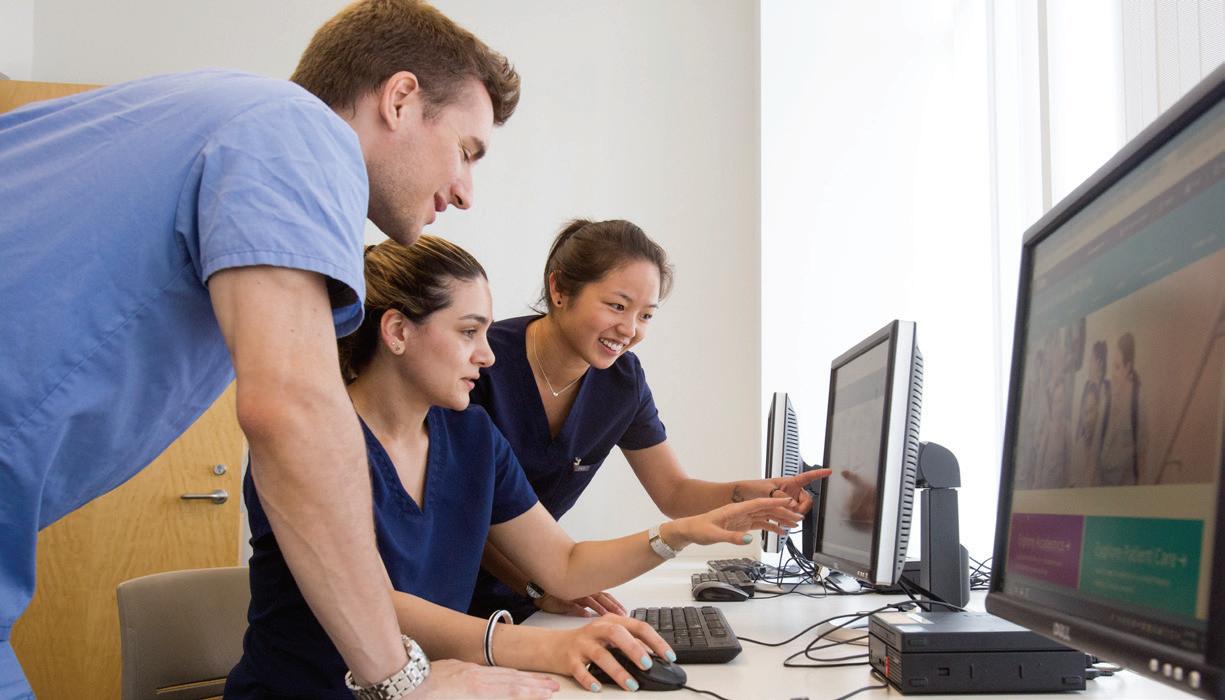
6,662 Undergraduates
5,253 Graduate and professional school students Fall 2023 student enrollments
In FY23, the economic impact of these education and scholarship activities reached $1.7B—a financial contribution that supported 9,980 jobs in the Commonwealth. Additionally, Tufts’ education and scholarship and educational offerings contributed $86.8 million in tax revenue.
Tufts students are empowered to ask bold questions and grow intellectually. With personal attention from renowned faculty, students develop the critical thinking skills to adapt and lead in our evolving world.
At Tufts, students discover the tools necessary to drive themselves—and the world—forward. Every student’s experience is personalized by drawing from a wide range of academic opportunities.
More than 100 countries represented by Tufts students
98% of undergrads are employed, in grad school, or in service six months after graduation
More than 100 countries of undergrads are employed, in grad school, within six months of graduating
Tufts is a member of the Association of American Universities (AAU), a consortium of America’s leading research universities noted for their accomplishments in education, research, and innovation. Tufts is ranked 40th of 1,500 universities in the 2023–24 edition of the U.S. News & World Report–Best National University Rankings. Doctoral
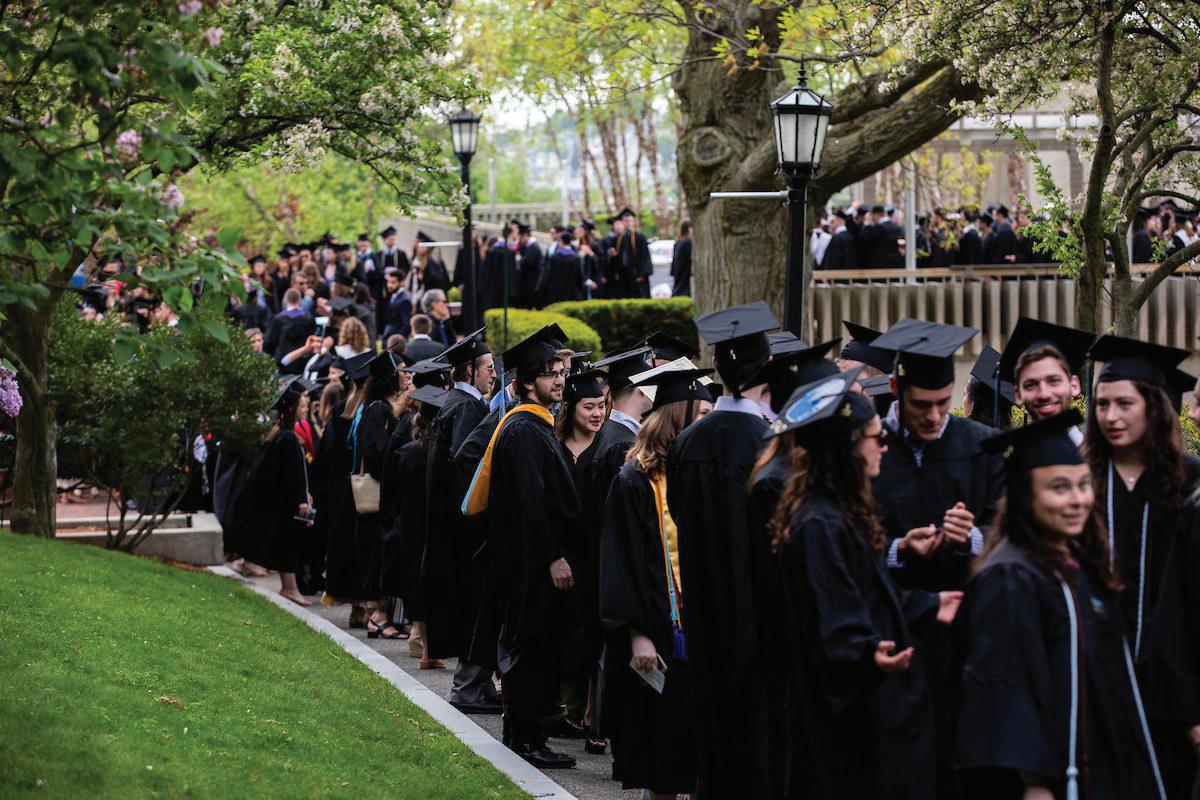
Tufts is a member of the Association of American Universities (AAU), a consortium of America’s leading research universities noted for their accomplishments in education, research, and innovation. Tufts is ranked 40th of 1,500 universities in the 2023-24 edition of the U.S. News & World Report - Best National University Rankings.
468
468
Tufts’ mission includes a dedication to the creation and sharing of knowledge through the interconnected realms of teaching and research. The university emphasizes excellence in education and research, fostering an environment that encourages faculty and students to participate in groundbreaking and innovative research across disciplines.
Tufts’ research endeavors often involve interdisciplinary collaboration, bringing together experts from different fields to tackle complex challenges. As a member of the Association of American Universities (AAU), Tufts stands at the forefront of innovation, scholarship, and solutions, actively contributing to the nation’s economy, security, and overall well-being.
The research operations at Tufts play a pivotal role in driving the university’s overall economic impact. In FY23, Tufts made a direct investment of $136 million in research activities within academic and clinical settings. The impact of Tufts’ research extends beyond the university, generating significant economic impacts regionally and nationally.
In FY23, the economic impact of Tufts’ research activities reached $293.3 million. This financial contribution supported 1,629 jobs in the state. Additionally, Tufts’ research contributed $14.2 million in tax revenue, further emphasizing the broader economic significance of Tufts’ research endeavors.
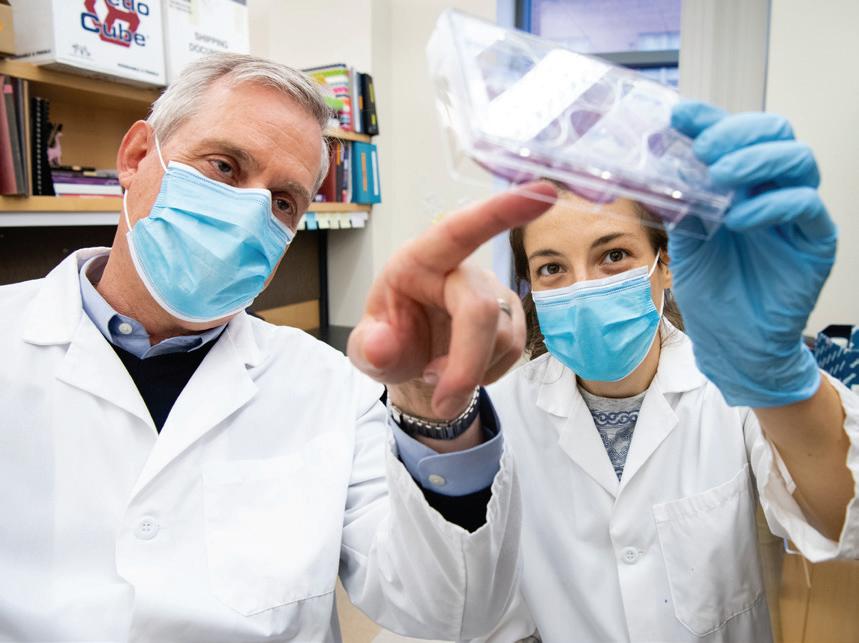
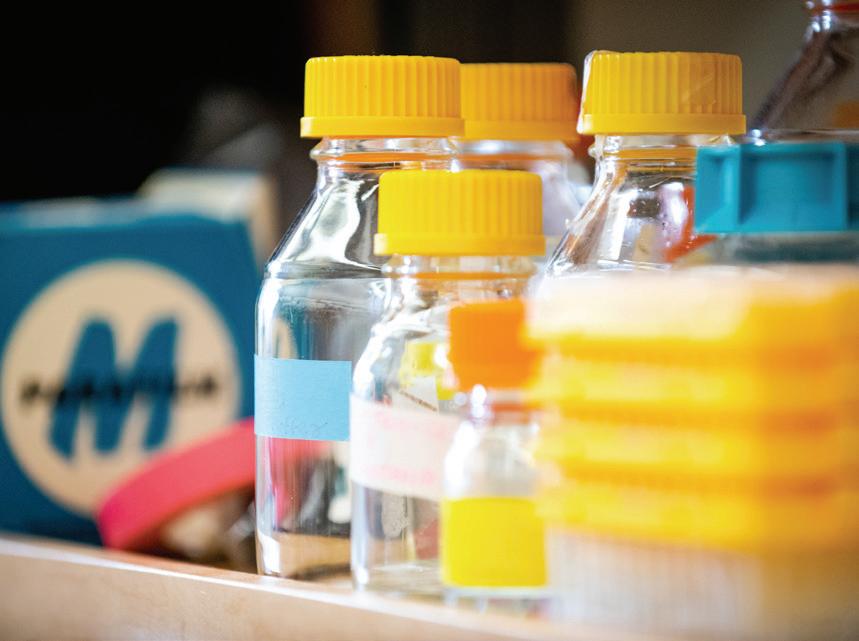
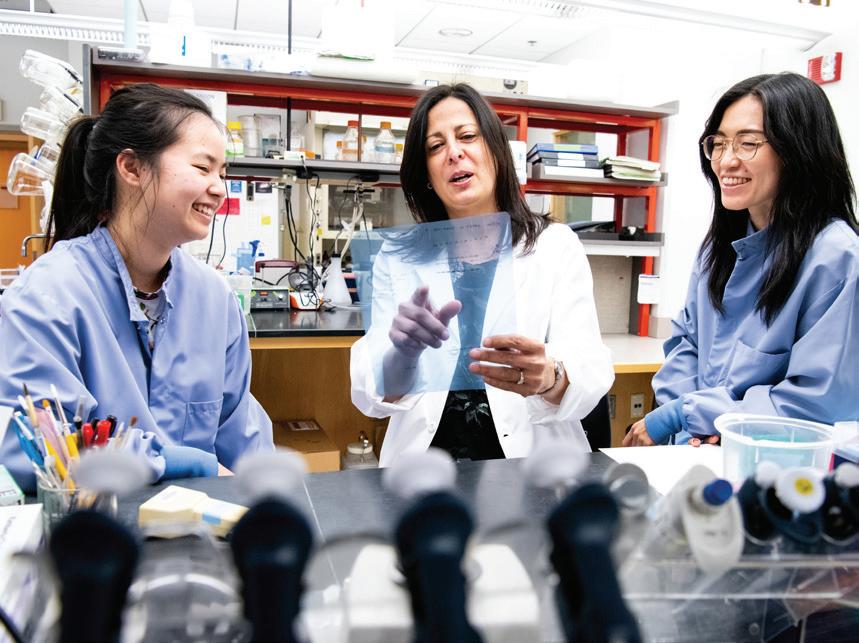
Over the years, Tufts discoveries have played a crucial role in establishing numerous local and national companies. These discoveries have led to a growing network of companies in the biomedical, advanced manufacturing, information technology, and bioscience industries, which generates millions in additional economic impact annually throughout the United States, all attributed to Tufts. While not within the scope of this study, the economic impact extends significantly through research commercialization, spin-off companies emerging from Tufts research, and businesses drawn to partner with Tufts, contributing billions beyond the $310 million of economic impact from research.
Some focus areas of Tufts’ research and development:
Tech Transfer and Industry Collaboration: Tufts fosters the establishment of startup companies by collaborating with faculty members to identify applications for their technologies. The university, through its Technology Transfer and Industry Collaboration (TTIC) initiative, works to refine the business case for these technologies and identifies public and private funding opportunities to advance the discoveries. The TTIC staff assists researchers in accessing venture networks, offering not only funding potential but also mentoring for those who are navigating the challenges of being first-time inventor-founders.
To catalyze startups, the TTIC builds essential relationships with sources of private funding, including angel investors, seed-stage investors, and venture capitalists. Additionally, the TTIC proactively seeks corporate research collaborations and supports translational research through programs such as the Tufts Launchpad | Accelerator.
Furthermore, the TTIC facilitates investigators in tapping into public programs such as MassBio and MassConnect, as well as funding sources such as the federal government’s Small Business Innovation Research program. The TTIC contributes to the development of a culture of technology transfer and entrepreneurship by providing seminars on intellectual property development and startup company formation.
In FY23: 82 invention disclosures, 58 new U.S. patent applications filed, 25 U.S. patents issued, 13 options/licenses concluded, and 6 startup companies developed
Clinical and Translational Science Institute: Tufts actively participates in interdisciplinary research, with a specific focus on fostering innovation in health sciences and building community partnerships. The Tufts Clinical and Translational Science Institute (CTSI) is designed to advance research, education, and community engagement in order to enhance human health and promote health equity. Established in 2008 with a Clinical and Translational Science Award (CTSA) from the National Institutes of Health (NIH), Tufts CTSI is an integral part of the national CTSA Consortium, which includes more than 50 institutions.
Over the years, Tufts CTSI has cultivated a robust partnership with 39 organizations, fostering expertise in areas such as emergency medicine, clinical trial methodologies, translational science education, and large effectiveness trials. The goals of Tufts CTSI’s third NIH CTSA grant include creating an environment and resources to support clinical and translational research, promoting team science with stakeholders for impactful translation across diverse populations, developing and disseminating innovative research methods, enhancing multi-site clinical trial performance, and providing education and training to cultivate a diverse workforce in clinical and translational research.
Through collaborative efforts and innovation across the translational spectrum, Tufts CTSI endeavors to accelerate the translation of scientific discoveries into practical solutions that contribute to the overall health and well-being of society.
Students in Tufts’ athletics program have achieved notable success both on the field and in academic pursuits. The program has produced eight Academic All-Americans and 522 All-Academic honorees in the New England Small College Athletic Conference. The university’s excellence in NCAA Division III collegiate sports is underscored by a secondplace national ranking in the Learfield Directors’ Cup in 2023. Tufts boasts six NCAA individual championships, seven conference championships, two NCAA national runner-up teams, and 15 teams achieving top-20 national finishes.
As Tufts athletics has expanded, it has brought about a growing economic impact locally and regionally. Teams from around the northeast and from the mid-Atlantic region travel to Medford and Somerville for athletics events, infusing millions of dollars into the local and regional economies. This influx of funds supports additional jobs and generates substantial tax revenue for local municipalities and school districts.


Direct spending by Tufts Athletics generates economic activity throughout the state. In FY23, the direct spending of Tufts Athletics, in combination with the indirect and induced impacts of dollars being re-spent throughout the economy, generated $21.7 million in overall economic impact to the state ($10 million in direct impact and $11.7 million in indirect and induced impact).
In FY23, Tufts Athletics directly employed 67 individuals (full-time and part-time positions). This direct employment generates additional spending throughout the region and state that, in turn, supports additional indirect and induced jobs created when Tufts Athletics, its employees, and visitors spend in the region and state. In total, Tufts Athletics supports 119 total jobs (67 direct jobs and 52 indirect/induced jobs) throughout the host communities.
State and local tax impacts attributable to Tufts Athletics’ presence totaled approximately $1 million in FY23.
Tufts student-athletes not only excel in their sports but also serve as positive representatives of the university through interactions with community members. These interactions reflect the character and values of Tufts student-athletes and affirm the university’s commitment to excellence both on and off the field. The dedication of these student-athletes, coupled with the support of alumni, friends, and families, positions them as outstanding ambassadors for Tufts.
Tufts’ influence on the region transcends numerical measures. While economic studies often quantify tangible impacts, Tufts also contributes in the community through various collaborative initiatives. The university places a strong emphasis on civic engagement, forging community partnerships and conducting outreach programs to enhance the overall well-being of its neighbors.
Tufts offers opportunities for faculty, staff, and students to engage in institutional partnerships, programs, and service-learning projects that contribute to the betterment of their communities. The university not only provides broader community access to faculty expertise but also adds depth and diversity to regional activities. While quantifying the exact dollar amount of Tufts’ outreach and community activities poses a challenge, the lives of those in the surrounding communities are undeniably enriched by the presence of Tufts in many ways each day.
Tripp Umbach estimates that Tufts faculty, staff, and students generated $49.3 million annually in charitable donations and volunteer services. These community impacts are in addition to the economic impact of Tufts and include:
• $15.8 million donated to local charitable organizations by Tufts faculty, staff, and students
• $33.5 million in value of volunteer time provided to area communities by Tufts faculty, staff, and students

Tufts is deeply committed to being an active and positive force within its community. Through economic contributions, cultural engagement, research innovations, and collaborative projects, Tufts aims to make a meaningful impact on the well-being and development of the communities it serves.
The following are among the community activities in which Tufts engages with the immediate and broader communities:
• Health Literacy and Disease Prevention: Tufts medical students collaborate with local organizations to promote health literacy and disease prevention among community residents, conducting workshops in multiple languages.
• Community Dentistry: $28 million was saved by community members through discounted services at the Tufts Dental Clinic. 190 children receive dental care from Tufts at their school through the Boston Public Schools Dental Program.
• Paws for People: More than 100 volunteer animal-handler teams trained at Cummings School of Veterinary Medicine visit with community members in nursing homes, hospitals, schools, and libraries.
• Tufts at Tech: This student-run veterinary clinic at Worcester Technical High School provides low-cost care for family pets within central Massachusetts’ underserved communities. Together, the high school and Cummings School of Veterinary Medicine address the healthcare needs of more than 5,500 patients annually.
• Educational Outreach and Engagement: Students offer free math, science, and literacy tutoring to students in nearly 15 schools across the region. These volunteers aim to inspire excitement for STEM education through hands-on community programming.
• Transformative Educational Experiences: Jumpstart volunteers prepare preschoolers for kindergarten, Let’s Get Ready offers SAT prep for teenagers, and high school students can apply for Tufts University Pre-College Scholarships to earn college credit.
• Youth Arts and Mentorship: Tufts supports youth arts through a variety of initiatives: City Studio provides Boston teens with access to art studios and mentorship; the School of the Museum of Fine Arts at Tufts hosts the Massachusetts Scholastic Art and Writing Awards; and Tufts Children’s Theater offers summer camp scholarships for local students.
• COVID Collaborations: The COVID-19 pandemic resulted in extraordinary levels of cooperation between Tufts and its communities. The university provided support, resources, expertise, and knowledge from the pandemic’s earliest days, including offering campus facilities for relief efforts and housing first responders, health-care workers, and COVID-positive patients. It also contributed cold storage and food donations to hungerrelief organizations and awarded emergency grants to local nonprofits.
• Support for the Humanities: The Center for the Humanities at Tufts (CHAT) fosters interdisciplinary humanities work, promoting research and reflection. Hosting public lectures, seminars, conferences, and colloquia, CHAT brings together faculty, postdoctoral scholars, and dissertation fellows to advance the profile of creative and humanistic research at and beyond Tufts.
• Tufts Chinatown Wellness Initiative: An interprofessional project involving medical, dental, and nutrition students, TCWI promotes health literacy and wellness through monthly interactive seminars in partnership with the Asian Community Development Corporation, reflecting the health interests and concerns of local housing communities. Students gain teaching experience in English, Mandarin, and Cantonese.
Tufts attracts to its campuses high-achieving students from around the country and the world. As a significant number of students opt to remain in New England post-graduation, the university serves as a talent generator for Boston, Grafton, Medford, and Somerville, supplying local companies with students equipped with 21st-century skills and handson learning experiences. As a result, each year, students who graduate from Tufts play a crucial role in meeting the workforce requirements of the Commonwealth and the region.
Approximately 43% of Tufts graduates opt to stay in New England, making substantial contributions to the local economy and enhancing the region’s economic vitality.
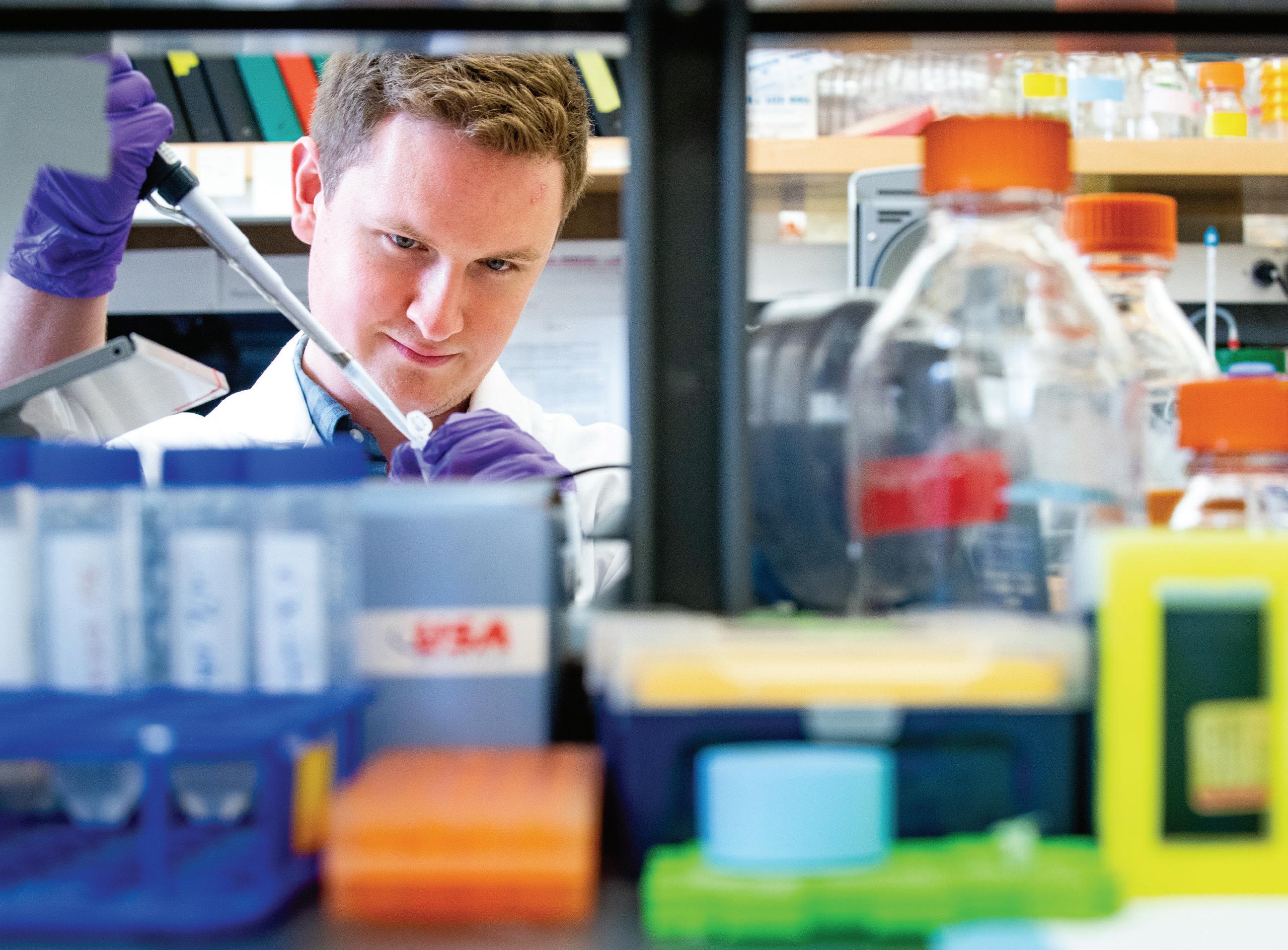

Tufts has a dedicated and accomplished alumni network that plays a significant role in providing mentorship, internships, and job connections for current students. Tufts graduates work worldwide, allowing the university’s reach to be felt globally. Tufts alumni play a significant role in both the domestic and international economies.
The university is shaping a skilled workforce to transform and lead an emerging global economy by educating the next generation of highly educated global citizens.
Study Year
Total Economic Impact
Direct Economic Impact
Indirect Economic Impact
Fiscal Year 2023: July 1, 2022–June 30, 2023
The total economic impact of an institution includes both the direct and indirect impacts generated in the economy as a result of the institution’s presence.
The direct impact includes institutional, employee, and visitor spending on the institution.
Indirect impact, also known as the multiplier effect, includes re-spending dollars within the local economy by vendors/suppliers and households.
Multiplier Effect
Direct Tax Payments
Indirect Tax Payments
Direct Employment
Indirect Employment
The multiplier effect is the additional economic impact created by the institution’s direct economic impact. Local companies that provide goods and services to an institution increase their purchasing by creating a multiplier.
The tax payments made by an institution to a unit of government
Governmental units collect government revenue in addition to those paid directly by an institution, including taxes paid directly by employees of the institution, visitors to the institution, and vendors who sell products to the institution.
The total number of employees at the institution is based on total jobs.
Indirect employment is the additional jobs created by the institution’s economic impact. Local companies that provide goods and services to an institution increase their number of employees as purchasing increases, thus creating an employment multiplier.
IMPLAN Methodology – Tufts’ economic impact was estimated using IMPLAN (IMpact Analysis for PLANNING), an econometric modeling system developed by applied economists at the University of Minnesota and the U.S. Forest Service. The IMPLAN modeling system has been in use since 1979 and is used by more than 500 private consulting firms, university research centers, and government agencies. The IMPLAN modeling system combines the input-output benchmarks of the U.S. Bureau of Economic Analysis’ (U.S. BEA) with other data to construct quantitative models of trade-flow relationships between businesses and between businesses and final consumers. From this data, one can examine the effects of a change in one or several economic activities to predict its effect on a specific state, regional, or local economy (impact analysis). The IMPLAN input-output accounts capture all monetary market transactions for consumption in a given period. The IMPLAN input-output accounts are based on industry survey data collected periodically by the U.S. BEA and follow a balanced-account format recommended by the United Nations.
IMPLAN’s Regional Economic Accounts and the Social Accounting Matrices were used to construct state- and Combined Statistical Area-level multipliers, which describe the economy’s response to a change in demand or production caused by Tufts’ activities and expenditures. Each industry that produces goods or services generates demand for other goods and services, and this demand is multiplied through a particular economy until it dissipates through “leakage” to economies outside the specified area. IMPLAN models discern and calculate leakage from local, regional, and state economic areas based on workforce configuration, the inputs required by specific types of businesses, and the availability of both inputs in the economic area. Consequently, economic impacts that accrue to other regions or states because of a change in demand are not counted as impacts within the economic area.
The model accounts for substitution and displacement effects by deflating industryspecific multipliers to levels well below those recommended by the U.S. Bureau of Economic Analysis. In addition, multipliers are applied only to personal disposable income to obtain a more realistic estimate of the multiplier effects of increased demand. Importantly, IMPLAN’s Regional Economic Accounts exclude imports to an economic area, so the calculation of economic impacts identifies only those impacts specific to the economic impact area. IMPLAN calculates this distinction by applying Regional Purchase Coefficients (RPC) to predict regional purchases based on an economic area’s characteristics. The RPC represents the proportion of goods and services purchased regionally under normal circumstances based on the area’s economic characteristics described in terms of actual trade flows.

IMPLAN analysis measures jobs/positions (part-time or full-time), not full-time equivalents (FTEs). Full-time and part-time employees impact the economy and support additional indirect and induced employment throughout the region. Employment data was provided as an output of all individuals who receive a paycheck from Tufts. This includes all fulltime, part-time, and employed faculty, staff, students, and independent contractors.
The overall economic impact values provided in this report for Tufts include the following impact values that were broken out as sub-analyses:
• Organizational spending–capital and operational
• Student, faculty, and staff spending
• Visitor spending
The following impacts are in addition to the economic impact of the spending categories listed above:
• Community benefit impacts
• Charitable donations and value of voluntary services
• Alumni impacts
• Commercialization of research and innovation
State and local tax impacts generated in the current FY23 study included all taxes paid by Tufts to Massachusetts (e.g., payroll, property, sales, unemployment, income, and any other taxes paid to the state and local government). Any federal taxes paid by Tufts were not included in the state and local tax impacts (e.g., FICA payments).
Impact analysis aims to quantify the impact of attracting “fresh” dollars to a region. Therefore, when including visitor spending in the impact analysis of a university, health system, or other organization, the analysis will include only those visitors coming to a region from outside of the region. Visitors to events who also live in the region would have spent their dollars in that region in other ways; therefore, this dollar was not attracted to the region because of the organization being analyzed.
For Tufts, the impact analysis looked at impacts on New England, the Commonwealth of Massachusetts, and Tufts’ host communities. Visitors to Tufts were counted only if they were from outside the region being analyzed.
Tripp Umbach employs federal per diem rates to approximate the spending of visitors in a specific area. The use of per diem rates is considered a conservative measure, with visitors typically spending more than these rates in any given area.
The rates specifically applied for this analysis include:
• Boston/Cambridge: $264 for lodging; $59.25 for meals and incidental expenses
• Standard Rate: $98 for lodging, $44.25 for meal and incidental expenses
Community benefits in this report include two forms of impact: monetary donations made by employees and students to local nonprofits and volunteer hours valued at a monetary value.
• Tripp Umbach conducted survey research to estimate the monetary donations an individual (student, staff, and faculty) is likely to make in a year. While this amount varies per person, it generally falls in the range of $500 to $700. Adjustments were made to account for individuals who do not donate.
• Independent Sector has established the value of a volunteer hour at $31.80 per individual per hour. Tripp Umbach applied this value, considering the average number of hours faculty, staff, and students spend on volunteer activities (estimated at 100 hours per year for 50% of employees and students).
The impact of Tufts research was measured as the yearly effect of its research expenditures in FY23. The analysis examines the expenditures made during FY23 to estimate the annual impact of Tufts research on the state economy.

Economic impact occurs when an organization expends money. Economic impact studies gauge both the direct influence of an organization’s spending and the additional indirect spending in the economy resulting from the initial expenditure. The economic impact is unrelated to the funds collected by institutions, their profitability, or their sustainability, as all operating organizations have a positive economic impact when they spend money and attract external spending.
Direct economic impact quantifies the dollars generated within a specific geographic region because of an institution’s presence. This includes spending on goods and services with regional vendors, the expenditures of its employees and visitors, and the economic influence on local businesses benefiting from the institution’s spending. It is crucial to note that not all dollars spent by an institution remain within the studied geographic region, as some may “leak” out through purchases from vendors outside the area.
The total economic impact incorporates the “multiplier” effect resulting from spending by companies engaged with an institution. Support businesses, including lodging establishments, restaurants, construction firms, vendors, and temporary agencies, contribute to spending multipliers, which attempt to estimate the cascading effect in the economy where the initial spending occurs. For instance, an institution’s spending with local vendors provides these vendors with additional funds that they reinvest in the local economy, creating a multiplier effect.
Multipliers are numerical representations of the secondary impacts arising from an organization’s operations. For instance, an employment multiplier of 1.8 indicates that for every 10 employees hired in a particular industry, an additional eight jobs would be created in other industries, resulting in a total addition of 18 jobs to the economic region. The multipliers employed in this study range from 1.8 to 2.0.
The Multiplier Model is mathematically derived using the input-output model and Social Accounting formats. The Social Accounting System provides the structure for the predictive Multiplier Model utilized in economic impact studies. The model is driven by purchases for final use. Industries producing goods and services for consumer consumption must procure products, raw materials, and services from other companies to create their products. These vendors, in turn, must also acquire goods and services. This cyclical process continues until all the money is leaked from the region’s economy.
Three types of effects are measured with a multiplier: the direct effect, the indirect effect, and the induced effect. The direct effect represents the known or predicted change in the local economy under study. The indirect effect involves the business-to-business transactions needed to fulfill the direct effect. Lastly, the induced effect is a result of local spending on goods and services by individuals working to satisfy the direct and indirect effects.
• Direct effects take place only in the industry immediately being studied.
• Indirect effects concern inter-industry transactions; because an institution is in business, it demands locally produced materials.
• Induced effects measure the effects of the changes in household income; employees of an institution and suppliers purchase from local retailers and restaurants.
• Total economic impacts are the total changes to the original economy as the result of an institution’s operations (i.e., direct effects + indirect effects + induced effects = total economic impacts).
IMPLAN (IMpact analysis for PLANning) relies on data and software for impact analysis. By employing classic input-output analysis along with regional-specific Social Accounting matrix and multiplier models, IMPLAN offers users a highly accurate and adaptable modeling system. The IMPLAN database incorporates county, state, ZIP code, and federal economic statistics that are regionally specialized rather than estimated from national averages. This database is instrumental in measuring the impact on a regional or local economy resulting from a specific change or event in the economy’s activity.
Employment impact measures the direct employment (employees, staff, faculty, administration) plus additional employment created in the economy caused by an institution’s operations. Indirect and induced employment impact pertains to other regional employees whose existence is a result of an institution’s economic impact. These jobs are related to the local population, encompassing city services (police, fire, EMS, etc.), employees at hotels and restaurants, clerks at retail establishments, and residents employed by vendors used by the institution.
Direct tax dollars include sales taxes and net corporate income taxes paid directly by the institution to the state. On the other hand, indirect taxes encompass taxes paid to the state by vendors conducting business with an institution and by individuals.
The findings outlined in this economic impact analysis are produced on an annual basis. The economic impact in subsequent years may vary, influenced by factors such as changes in the number of employees and students, capital expansion, growth in external research, and state appropriations.

